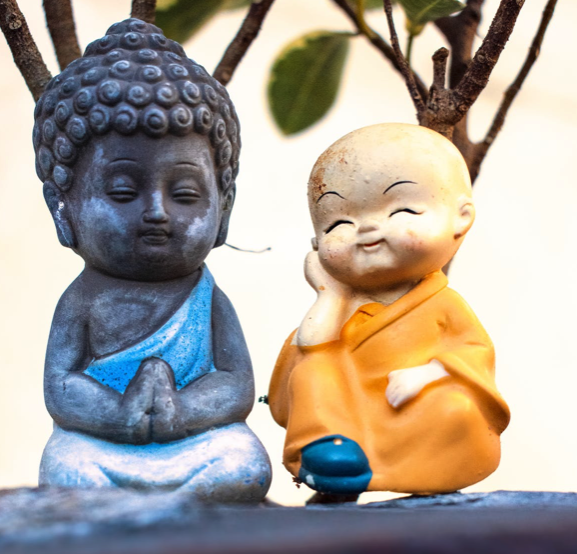
Whether we know it consciously or not, humans love helping—we are wired to help!
Our beloved yoga tradition has a culture of helping, embedded in the ancient spiritual practice of karma yoga. Everyone knows about karma, right? We have all heard of “good” or “bad” karma? Simply put, karma means action. Doing the wrong thing, the neutral thing, the right thing, or, as Anna says in Frozen II, “the next right thing.”
The idea of karma can be useful for just about anyone. Our actions determine the reward or punishment either now, later, or in the next lifetime. It’s a way to remember to “do the right thing” in this complicated and distracting world.
Karma yoga is the yoga of action, often called the yoga of service. It is the commitment to doing the right thing as a way of uplifting both the self and others.
Early in my yoga journey, I learned about mantras. I was also working on impulse control, particularly automatic judgmental thinking about myself and others. Whenever I had critical thoughts about someone else, I tried replacing the thought with the loving-kindness mantra:
“May you be happy, may you be peaceful, may you be at ease.”
Later, I began using it on things that caused me anxiety, such as an ambulance whizzing by with sirens blaring. I would redirect my anxiety to offer loving-kindness to the person inside. The most difficult part was repeating the mantra when I had negative thoughts about myself. It’s hard, but really important when it comes to karma, as Buddhist tradition teaches that loving-kindness practice should always include oneself.
Just like everything in life, it wasn’t perfect. I am not free from judgemental thoughts. It’s more like it offers the mind an alternative to automatic negative thinking. Simply having that alternative is a type of freedom. I am no longer trapped in the urgent, necessary need to judge. There is now another option.
Can we teach our children about this? Yes! Kids can learn anything grown-ups can. With kids (as with all of us), a super way of learning is by forming habits.
It’s simple to offer a loving-kindness meditation to kiddos while in savasana, or to remind them if they get into squabbles during class. Will they think it’s weird? Probably. If we repeat it often enough will it sink in anyway? Yes. Will kinder thoughts eventually translate into kinder, more generous actions? I am absolutely sure they will.
As Thích Nhất Hạnh, the iconic Buddhist monk says:
“It takes time to practice generosity, but being generous is the best use of our time.”
The Thich Nhat Hanh Foundation tell the story of a vegetable in Vietnam called he (pronounced “hey”), which belongs to the onion family, and is delicious in soup. If you cut them often, right at the base of the stalk, they grow bigger and bigger. That is how generosity works too. The more you give, the richer you get, in joy and well-being.
Children can visualize something really yummy and imagine themselves giving it away to someone they love, or to someone who needs it. Ask them to notice how their body feels, and how their mind feels when they imagine giving. What does generosity look like? What does it feel like?
These beautiful books work like magic in kids’ yoga classes and help kids learn to do the right thing:
>> Be a Tree by Maria Gianferrari reminds us beautifully that we are part of nature and that nature is generous.
>> Outside In by Deborah Underwood is another one about the generosity of nature. We may forget about nature, but nature remembers us.
>> One Love by Cedella Marley contains the lyrics to Bob Marley’s iconic anthem, set to bright and joyful drawings about being kind to animals, family, nature, and our neighbours.
>> How Kind! by Mary Murphy is a perfect story for preschool yoga, with one farm animal doing a kindness for the next, which creates a chain reaction of generosity.
Speaking of doing the right thing, the holiday season is a great time to lend a hand to the hardworking charities and nonprofits in our community—and children can get involved too. Volunteering, giving generously, and doing karma yoga, has tangible benefits for our collective well-being. The experts want us to know that it’s good for us too!
This holiday season, please consider donating your time, energy, and love—even an hour can make a difference, both to you, and to our community.











Read 1 comment and reply